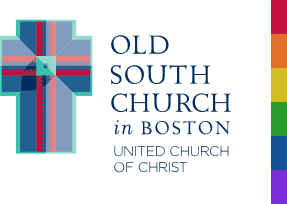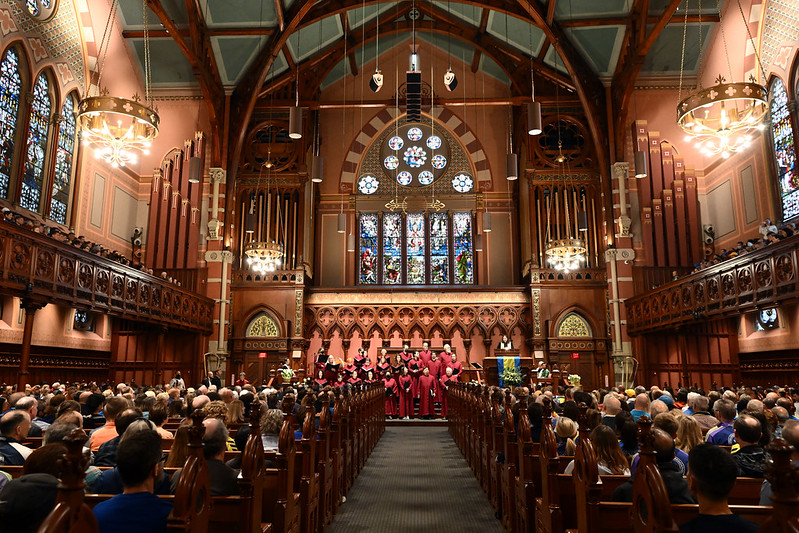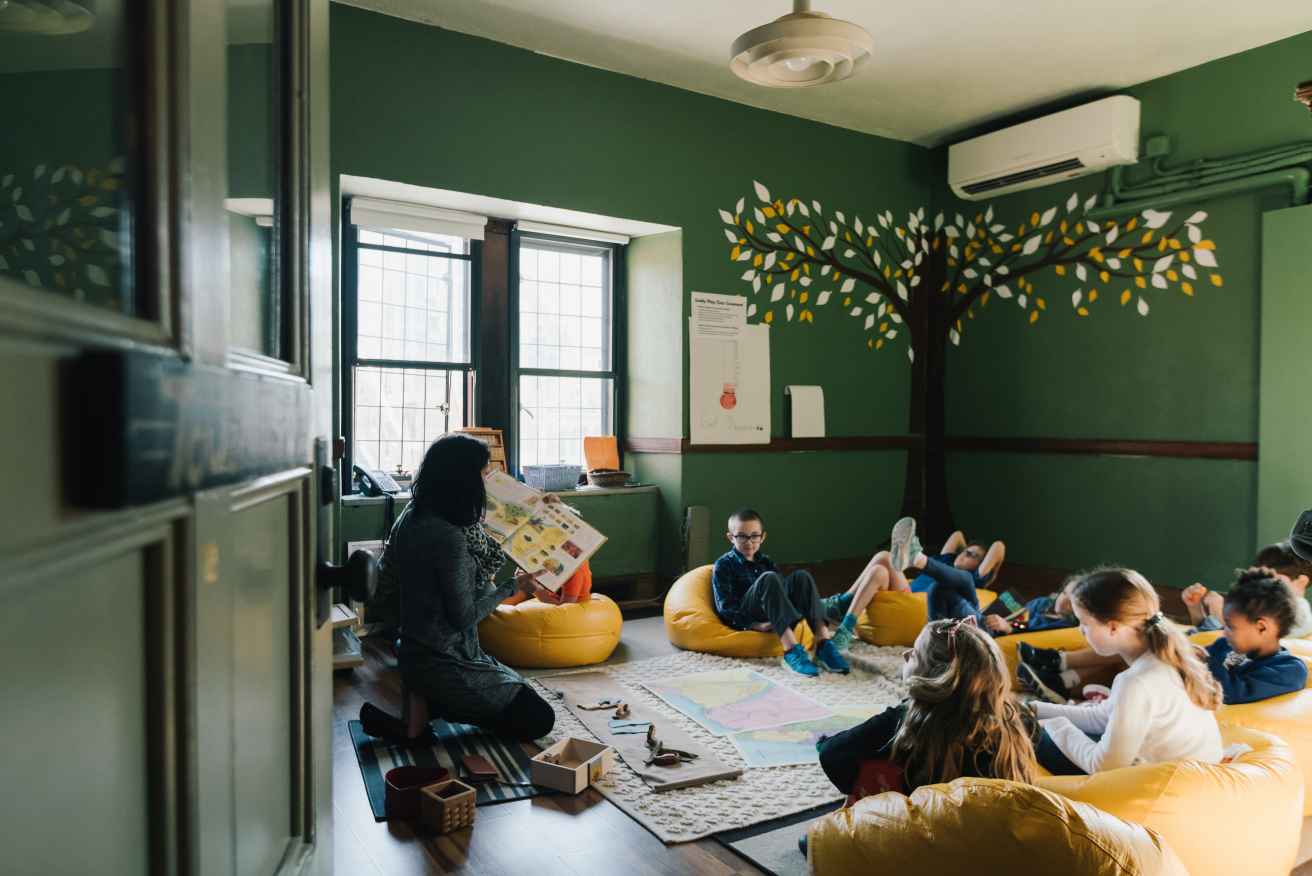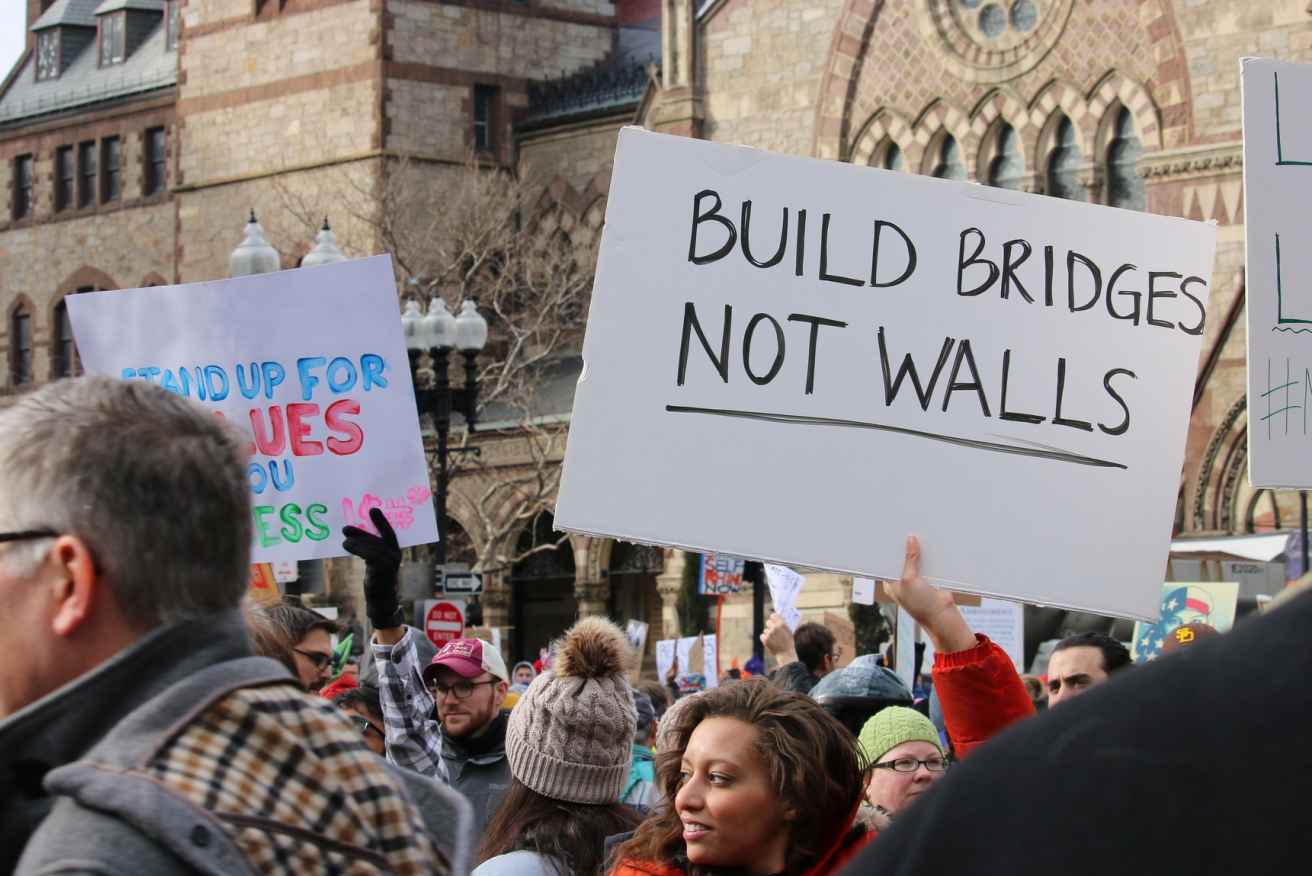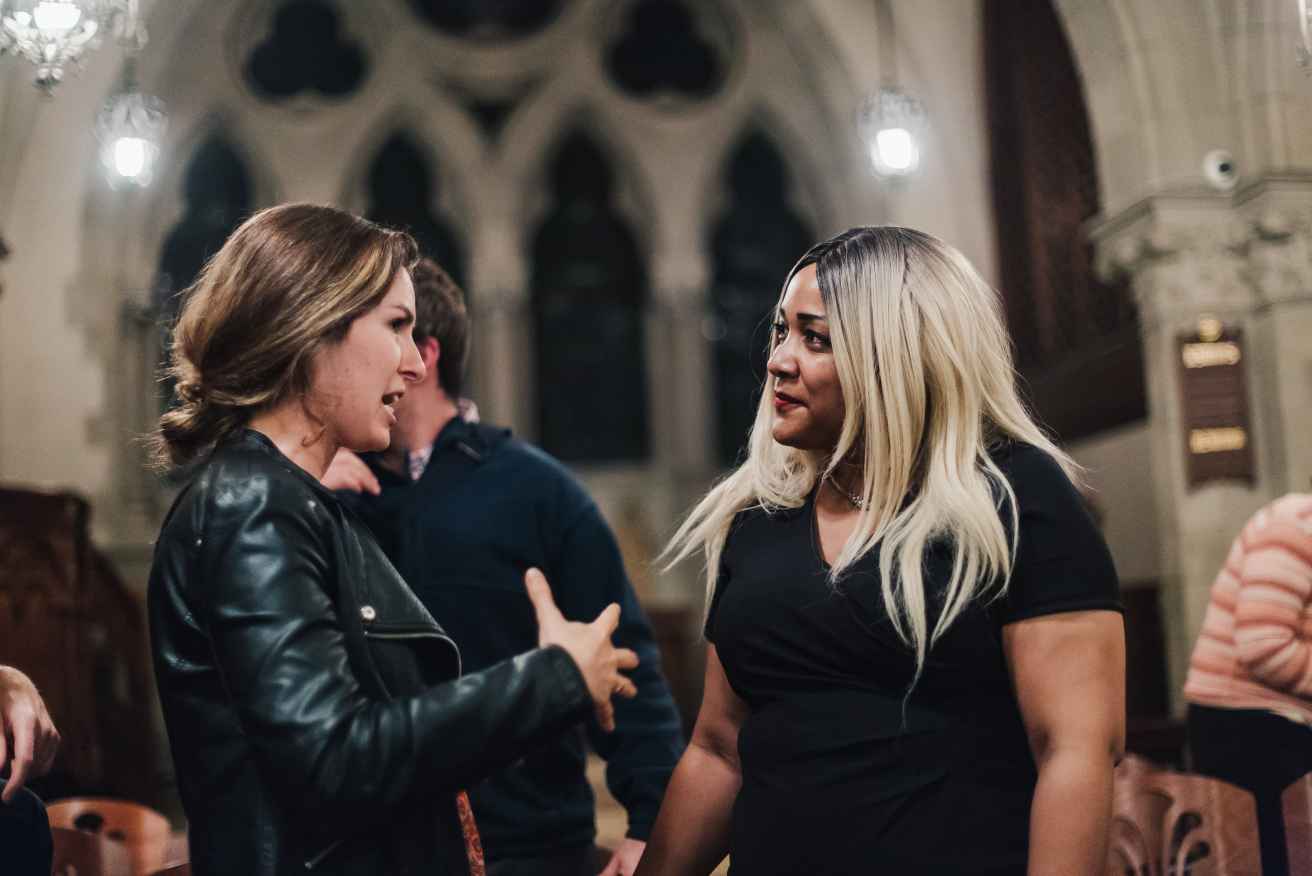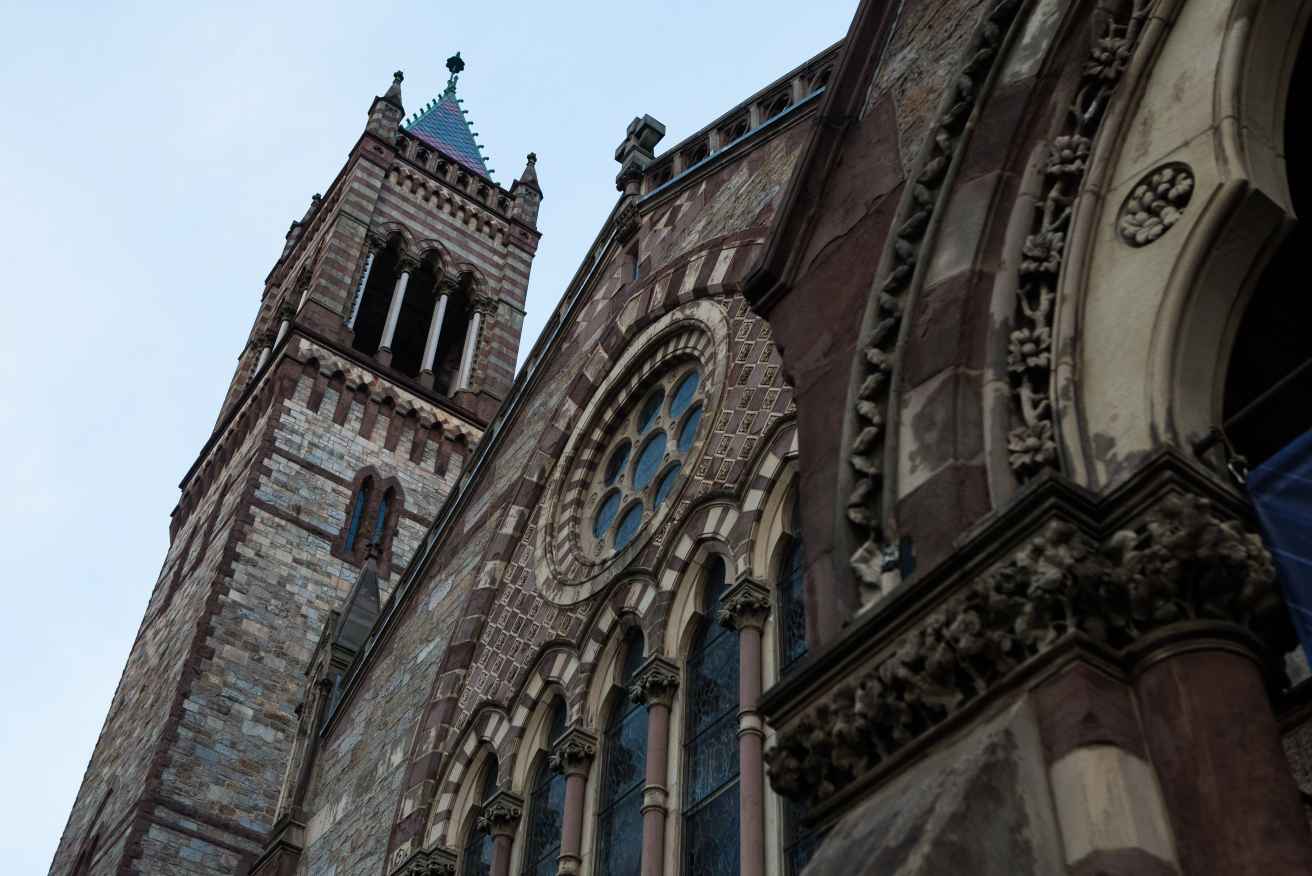Festival Worship - Second Sunday of Easter
Festival Worship - Second Sunday of Easter
With Scars to Show
Transcript
Mary Magdalene had not slept. She had spent much of the night in the graveyard, doing what it is in the nature of things to do in a graveyard: she was talking with the dead, saying to them that which might have been said, that which must be said, saying ‘thank you’, and ‘I’m sorry,’ and ‘if I had only…’ She was sharing sweet remembrances and sad regrets, still almost expecting to be answered back. The hours had drawn on, and as dawn broke, exhausted in body and exhausted in spirit, in a daze of sorrow, she saw the tomb was opened, opened before her – but when? and by whom? and how? Wondering whether this was but a bad dream, she fled. Mary Magdalene fled, and found Peter and John. She told them that Jesus’ body was not where it had been buried. They did not know what to make of her report, did not know what to believe, did not know if it was the disoriented imagining of one sleepwalking under grief’s spell, or if there was some truth to what she said. So they ran on, saw the grave indeed had been disturbed, saw the shroud lying undone, and then left in a cloud of confusion themselves. Mary lingered at the site. Angels, even Jesus, appeared to her there, only, weeping inconsolably, she could not recognize him; she could not see him through her tears.
It is now evening, evening on that first Easter Sunday. A fog of uncertainty and fear has descended on the disciples. They are straining to make sense of the morning’s strange happenings, and that while still very much staggering from the horror the week had held. Their minds can barely wrap around reality. They cannot come to grips with what has gone on – that ‘he who was here with us, who was just here with us, who was right here with us is no longer with us.’ That Jesus has died is baffling in itself, but that Jesus is back is beyond belief. No one knows what to think. No one knows what to feel. No one knows what to say. So they sit in silence and in hiding, trembling with fright at the thought that those who conspired to put Jesus to death are yet prowling, terrified that the same fate awaits them… When they hear a ghost of a whisper, hear the faint, wafting words, ‘Peace. Peace be with you.’ They hear a voice, a voice that sends a shiver up their spine, that sets their souls on edge. ‘Peace. Peace be with you.’ And they turn. And their eyes widen and their hands shake and their hearts race. They turn to see a man, a man they do not know but whose presence unsettles, a man they do not recognize but whose face spooks. The disciples are frozen before him, but again: ‘Peace. Peace be with you.’ And he reaches out with a familiar gentleness, as if to touch them, turns his palms outward and says, ‘See my hands, my feet, my side.’ And they do, they do see his hands, his feet, and his side; they see Jesus.
It is a wonder to me that, as he walks through the graveyard, walks into the troubled, fretful company of that circle of followers, walks then toward Thomas – it is a wonder to me that there is no otherworldly glow to Jesus, no halo to give him away, no beard. It is a wonder to me that he should be totally unrecognizable to those he loved the most, but for his scars. It is a wonder to me that only in seeing and in touching his wounds do his disciples trust that he is who he is. What is more, it is a wonder to me that Jesus the Christ should be raised with wounds at all, that in his three-day brush with infinity, that in the course of his having been, by God, resurrected from the dead, he should look worse for the wear, with the hell he had been through inscribed on his body, with his pain etched indelibly and evermore onto his palms, as if, in the end, the crucifixion were not quite canceled out. It is a wonder to me that, at least for Jesus, in the life after death, traces of the life on this side of it linger on. It is a wonder to me that the pioneer to the Great Beyond should return to us in the state he has, and that what he gives us to see is that to be raised is not (exactly) to have one’s suffering erased. It is a wonder to me that Jesus enters into the haze of head-spinning grief and gut-wrenching sadness, into the thick of despair and heartache, and that what soothes the sorrowing, the only thing that soothes the sorrowing, that puts their weary spirits at rest, is the quiet presence of one who can be seen to have suffered, too.
On the one hand, this feels foreign, even frightening – and if the consolation of the Christian faith is but that ‘it will all be better, by and by’, that if you keep your chin up on the earth here below, you can white-knuckle it through your suffering until the sun comes out tomorrow or until you fly away, off to the far, celestial shores of heaven where there will be no crying, if that is the case, then to be sure, the coming among Mary Magdalene and the disciples and Thomas, the coming among them of Jesus, risen with his wounds, without gleaming, beatific gloss, but still with scars to show, to be sure, that can only feel like a stripping away of all comfort. But on the other hand, for those of us who know what it is to be cut deep, who know what a struggle it is to learn to survive without them, who know what an agonizingly winding and arduous journey wholeness is, for those of us who know what it means to be haunted, what it means to live through irreparable loss, who how hard it is to move on, how impossible it is to get over it, the sparing assurance of this story of Jesus, risen with his wounds, Jesus, whose pain in some mysterious, but transfigured sense stays with him, the sparing assurance of this story is one that we – well, it is one that I have come to believe with all my heart.
And here is what I believe: We are not promised there will be no tears in heaven, but rather that God will wipe away the tears we do shed, that we cannot but shed, from our eyes. I believe that pain is part of who Christ is, and who we are – that it is singular and special and shapes the bone structure of our spirits such that we cannot stand before God or any other and be seen for who we are without sharing something of our pain, something of how we stand up in it. I believe pain asks to be seen and honored and welcomed and befriended, asks that of us, asks that of others – and that it knows when it will not be granted safe lodging, that is senses when it will not be held in sympathy, when will not be received with tenderness; but I believe pain seeks to entrust itself to us and to others, and that in hosting it, in opening ourselves to it, we will be changed. I believe that it will become the strong bones within us, the sturdiness we will live and move and run and rise by.
I believe that we will rise, but I believe it is then the vocation of each of us who has been raised to return as Jesus returned, to return and to bear witness, to walk back into the fog of despair and grief, into the thick of sadness where the sorrowing cannot see straight, where no one knows what to say or what to think or what to feel, and to let the pain in us communicate silently to the pain in them, to show them our hands and feet and side, show them our wounds, let them touch us and so let them see and trust that it does not have to hurt anymore. When they touch our wounds and we do not wince – do not wince because, by the grace and goodness of God, and by the patience and kindness we have shown ourselves and been shown by others, when they touch our wounds and we do not wince, we make palpable a peace that yet passes understanding, we make visible a healing beyond belief. Resurrection returned Christ and will return us to ourselves with scars to show – scars as signs, as testimony that though we pass through suffering, though we come by way of sorrow, the pain and loss we would trade if we could can be a pathway to transformation.
